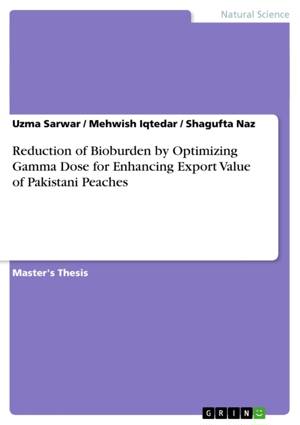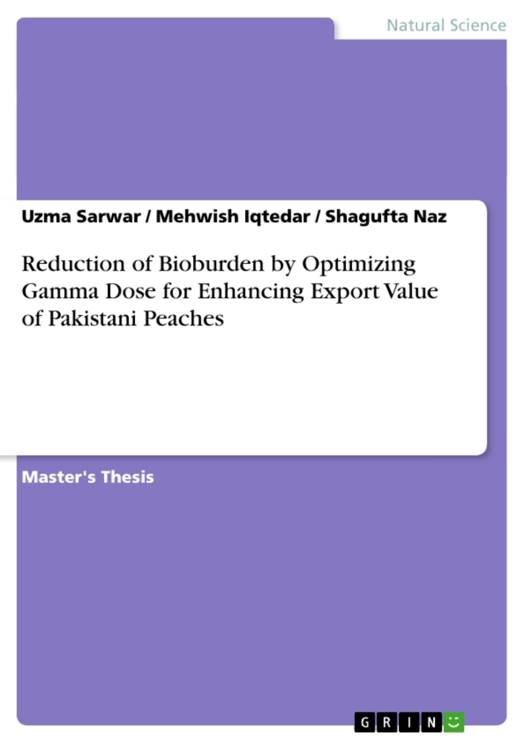
- Afhalen na 1 uur in een winkel met voorraad
- Gratis thuislevering in België vanaf € 30
- Ruim aanbod met 7 miljoen producten
- Afhalen na 1 uur in een winkel met voorraad
- Gratis thuislevering in België vanaf € 30
- Ruim aanbod met 7 miljoen producten
Zoeken
Reduction of Bioburden by Optimizing Gamma Dose for Enhancing Export Value of Pakistani Peaches
Magisterarbeit
Uzma Sarwar, Mehwish Iqtedar, Shagufta Naz
Paperback | Engels
€ 111,95
+ 223 punten
Omschrijving
Master's Thesis from the year 2014 in the subject Chemistry - Bio-chemistry, grade: A, course: Biotechnology, language: English, abstract: Peach is the most commonly eaten stone fruit which grows in the temperate regions of the world. These are also among the most exported fruits in term of volume and value. Peaches, being perishable and susceptible to microbial spoilage, have a short shelflife. The goal of this study was to determine the effect of gamma irradiation on the microbiological and organoleptic properties of peaches and secondly, to determine the effects of irradiation on shelf-life of the fruit. The fruit (local variety, No.4), at proper maturity stage was collected and irradiated with 0.25, 0.5, and 0.75kGy dose, stored under refrigerated (4 o C) conditions for a period of three weeks. Total viable count, Gram negative Enterobacteriaceae count, Salmonella-Shigella count, yeast and mold count, loss in weight and decay percentage was evaluated after 7, 14 and 21 days of storage (4 o C). Data obtained from microbiological and sensory evaluations of irradiated peaches was compared with the observations obtained from unirradiated (control) samples. Microbial evaluation of the fruits revealed the presence of Salmonella sonnie on SS agar and non fermentor spp. on macConkey agar. Ten types of yeasts were isolated on potato dextrose agar and analyzed microscopically. Studies showed total bacterial, yeast and molds significantly decreased with increasing dose level. The sensory evaluation of the fruits revealed that irradiation preserves the texture and appearance of fruit. The gamma-irradiation dose of 0.75kGy proved to be effective in reducing weight loss and significantly (p
Specificaties
Betrokkenen
- Auteur(s):
- Uitgeverij:
Inhoud
- Aantal bladzijden:
- 96
- Taal:
- Engels
Eigenschappen
- Productcode (EAN):
- 9783656894155
- Verschijningsdatum:
- 7/02/2015
- Uitvoering:
- Paperback
- Formaat:
- Trade paperback (VS)
- Afmetingen:
- 148 mm x 210 mm
- Gewicht:
- 136 g

Alleen bij Standaard Boekhandel
+ 223 punten op je klantenkaart van Standaard Boekhandel
Beoordelingen
We publiceren alleen reviews die voldoen aan de voorwaarden voor reviews. Bekijk onze voorwaarden voor reviews.








